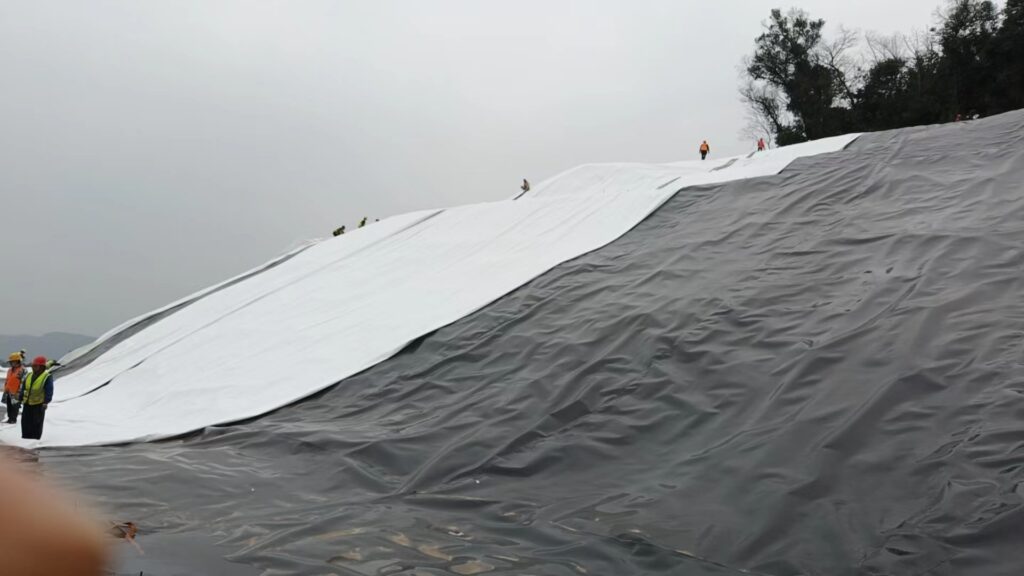The Difference Between Hard Plastic Pond Liners and Pond Liners
Pond liners are essential for creating and maintaining a water feature such as a pond or water garden. They come in various materials, including hard plastic and flexible liners such as EPDM (ethylene propylene diene monomer) or PVC (polyvinyl chloride). Here are the main differences between hard plastic pond liners and flexible pond liners:
Material Flexibility:
- Hard plastic liners: These are rigid and inflexible. They are typically made of materials like fiberglass or preformed plastic. They come in predefined shapes and sizes and are difficult to customize or adapt to irregular pond shapes.
- Flexible pond liners: These are made of materials like EPDM or PVC and are highly flexible. They can conform to any shape of the pond, including irregular contours and shelves. This flexibility allows for more creativity in pond design.
Installation Ease:
- Hard plastic liners: Installation of hard plastic liners can be more challenging, especially if the shape of the liner doesn’t perfectly match the pond’s design. They may require additional support structures and excavation to fit properly.
- Flexible pond liners: These are generally easier to install. They can be laid out directly into the excavated pond hole, and their flexibility allows for adjustments during installation. They don’t usually require additional support structures.
Durability:
- Hard plastic liners: They are generally durable and can withstand external pressures well. However, they may crack or break over time, especially if subjected to extreme temperature changes or if the ground settles.
- Flexible pond liners: EPDM and PVC liners are designed to be durable and resistant to punctures and tears. They can withstand temperature variations and ground movement without cracking.
Customization:
- Hard plastic liners: These come in preformed shapes and sizes, limiting customization options. If you have a specific design in mind, it may be challenging to achieve with a hard plastic liner.
- Flexible pond liners: They offer more flexibility in design, allowing for custom shapes and sizes. You can easily create waterfalls, streams, and other features with flexible liners.
Repairability:
- Hard plastic liners: Repairing cracks or damages in hard plastic liners can be more difficult and may require specialized tools and materials.
- Flexible pond liners: They are typically easier to repair. Patch kits are readily available, and repairs can often be done quickly and effectively.
In summary, while hard plastic liners offer durability and structural support, flexible pond liners provide more flexibility, easier installation, and better customization options for pond designs. Ultimately, the choice between the two depends on the specific requirements and preferences of the pond owner.

Which is better, hard plastic pond liner or pond liner?
The choice between a hard plastic pond liner and a flexible pond liner depends on several factors, including the specific needs and preferences of the pond owner, as well as the characteristics of the pond itself. Here are some considerations to help you determine which type may be better for your situation:
Pond Design:
- If you have a simple, regular-shaped pond with straight edges and minimal contours, a hard plastic liner may suffice.
- For ponds with irregular shapes, contours, or features like waterfalls or streams, a flexible pond liner provides more versatility in design.
Installation Ease:
- Flexible pond liners are generally easier to install, especially for ponds with irregular shapes. They can be maneuvered into place without the need for additional support structures.
- Hard plastic liners may require more effort and potentially additional excavation to fit properly.
Durability:
- Both types of liners can be durable, but flexible pond liners like EPDM and PVC are often more resistant to punctures and tears.
- Hard plastic liners may be prone to cracking or breaking over time, especially in areas with temperature fluctuations or ground movement.
Customization:
- Flexible pond liners offer greater flexibility in design and customization, allowing you to create unique shapes and features.
- Hard plastic liners come in preformed shapes and sizes, limiting customization options.
Repairability:
- Flexible pond liners are usually easier to repair, as patch kits are readily available and repairs can often be done quickly and effectively.
- Repairing cracks or damages in hard plastic liners may be more challenging and require specialized tools and materials.
Cost:
- The cost of hard plastic liners versus flexible pond liners can vary depending on factors such as material quality, size, and brand.
- In general, flexible pond liners may be more cost-effective, especially for larger or more complex ponds, due to easier installation and customization.
Ultimately, there is no one-size-fits-all answer to which type of pond liner is better. It depends on your specific needs, budget, and preferences. If you prioritize flexibility, easy installation, and customization, a flexible pond liner may be the better choice. However, if you have a simple pond design and prioritize structural support and durability, a hard plastic liner could be suitable.

